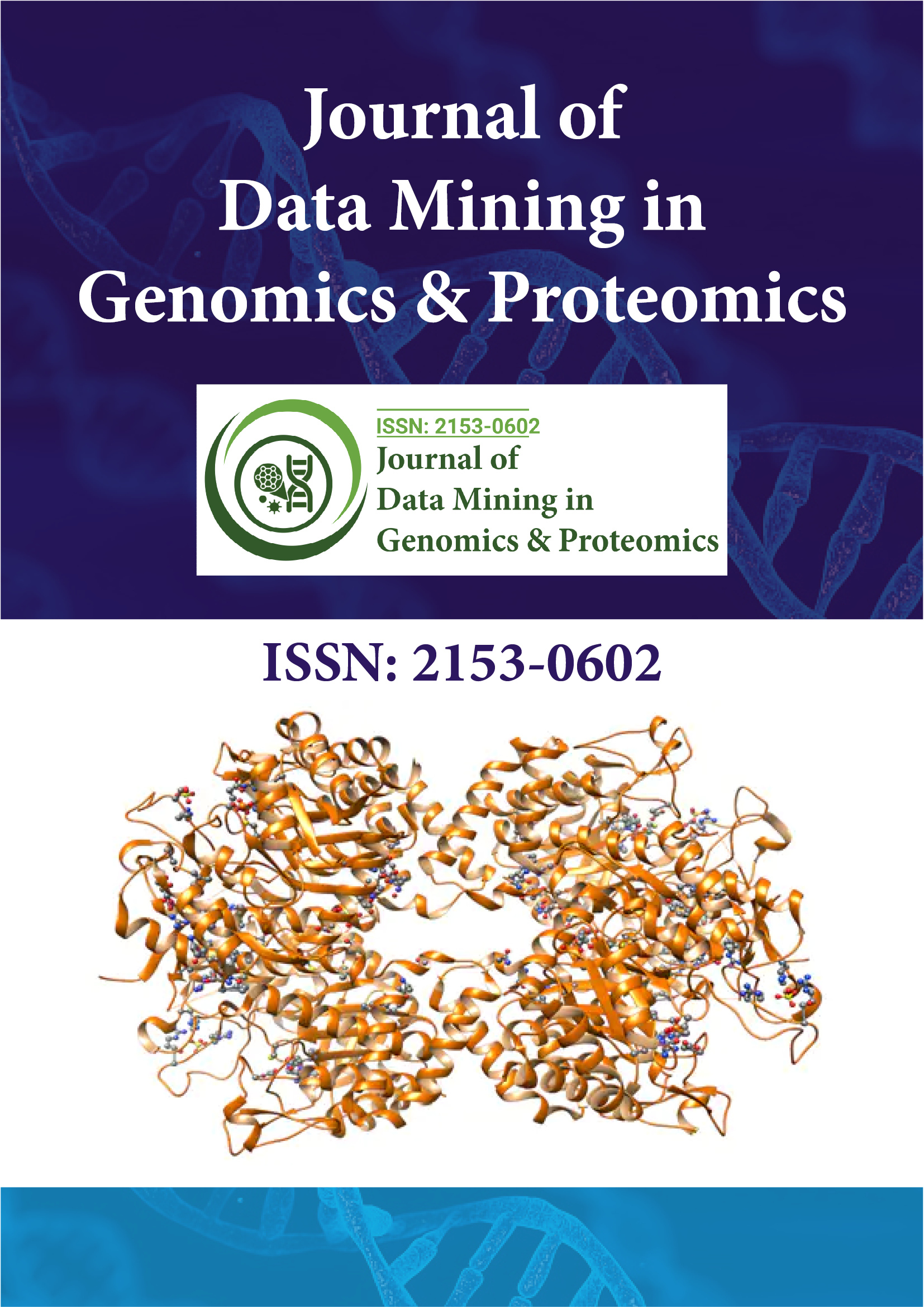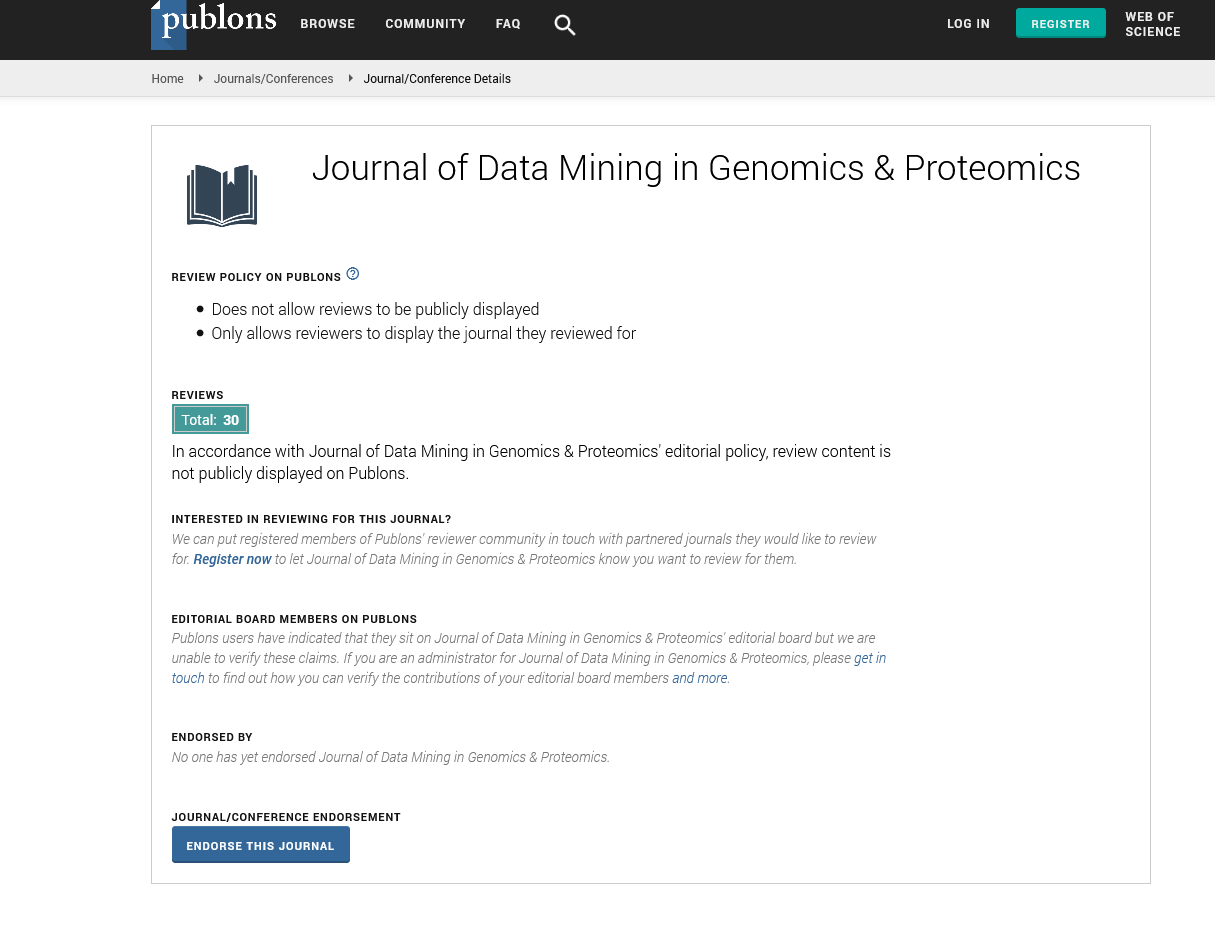Indexed In
- Academic Journals Database
- Open J Gate
- Genamics JournalSeek
- JournalTOCs
- ResearchBible
- Ulrich's Periodicals Directory
- Electronic Journals Library
- RefSeek
- Hamdard University
- EBSCO A-Z
- OCLC- WorldCat
- Scholarsteer
- SWB online catalog
- Virtual Library of Biology (vifabio)
- Publons
- MIAR
- Geneva Foundation for Medical Education and Research
- Euro Pub
- Google Scholar
Useful Links
Share This Page
Journal Flyer

Open Access Journals
- Agri and Aquaculture
- Biochemistry
- Bioinformatics & Systems Biology
- Business & Management
- Chemistry
- Clinical Sciences
- Engineering
- Food & Nutrition
- General Science
- Genetics & Molecular Biology
- Immunology & Microbiology
- Medical Sciences
- Neuroscience & Psychology
- Nursing & Health Care
- Pharmaceutical Sciences
Opinion Article - (2024) Volume 15, Issue 4
Application of SiMoA Platform in Tumor Research
Andreas Laupacis*Received: 20-Nov-2024, Manuscript No. JDMGP-24-27979; Editor assigned: 22-Nov-2024, Pre QC No. JDMGP-24-27979 (PQ); Reviewed: 06-Dec-2024, QC No. JDMGP-24-27979; Revised: 13-Dec-2024, Manuscript No. JDMGP-24-27979 (R); Published: 20-Dec-2024, DOI: 10.4172/2153-0602.24.15.365
Description
The field of oncology has witnessed tremendous advancements in recent decades, largely due to technological innovations in biomarker detection and quantification. Among these innovations, the Single Molecule Array (SiMoA) platform has emerged as a transformative tool in tumor research. SiMoA’s ultra-sensitive capabilities enable the detection of biomarkers at femtomolar concentrations, providing researchers with unprecedented opportunities to study tumor biology, monitor disease progression and evaluate therapeutic responses. This article describes the application of the SiMoA platform in tumor research and its potential to drive future discoveries.
Understanding the SiMoA platform
SiMoA is an advanced immunoassay technology that utilizes digital detection to quantify proteins and other biomarkers with exceptional sensitivity. Unlike traditional immunoassays, such as Enzyme-Linked Immunosorbent Assays (ELISAs), SiMoA achieves single-molecule resolution by isolating individual molecules in arrays of microwells and detecting signals using fluorescence or chemiluminescence. The platform’s ability to analyze minute quantities of biomarkers makes it a potential tool for studying cancer, where biomarker concentrations are often low and difficult to detect using conventional methods.
Applications of SiMoA in tumor biomarker discovery
Biomarker discovery is a fundamental of tumor research, enabling the identification of molecules that reflect tumor presence, progression, or response to treatment. SiMoA’s unparalleled sensitivity facilitates the detection of rare biomarkers in blood, cerebrospinal fluid and other bodily fluids. For instance, SiMoA has been used to measure circulating tumor markers, such as Prostate-Specific Antigen (PSA) and Carcinoembryonic Antigen (CEA), at levels undetectable by conventional methods. This capability allows researchers to uncover early-stage cancers and describe biomarkers that were previously overlooked.
Furthermore, the platform’s high effective range enables multiplexing the simultaneous measurement of multiple biomarkers in a single assay. This feature is particularly valuable in oncology, where the heterogeneity of tumors often necessitates a multi-biomarker approach to gain comprehensive insights into disease biology.
Early cancer detection and liquid biopsies
Early detection of cancer significantly improves patient outcomes and SiMoA is playing a critical role in advancing non-invasive diagnostic approaches. The platform has been used in liquid biopsy studies to detect cancer-associated biomarkers, such as circulating tumor DNA (ctDNA) and tumor-derived extracellular vesicles. By analyzing these markers in blood samples, SiMoA suggests a minimally invasive alternative to traditional tissue biopsies, reducing patient discomfort and enabling frequent monitoring.
For example, researchers have utilized SiMoA to detect minute levels of ctDNA, which carries genetic mutations specific to tumors. This application is particularly beneficial for identifying cancers at early stages, when treatment options are more effective. Additionally, SiMoA’s sensitivity supports the detection of residual disease after treatment, helping clinicians monitor recurrence and adjust therapeutic strategies accordingly.
Evaluating therapeutic responses
Monitoring the efficacy of cancer treatments is essential for optimizing patient care and developing new therapies. SiMoA enables real-time evaluation of therapeutic responses by quantifying changes in biomarker levels over time. For instance, the platform has been used to track reductions in tumor markers following chemotherapy or immunotherapy, providing insights into treatment effectiveness.
In immuno-oncology, SiMoA has proven invaluable for measuring immune-related biomarkers, such as cytokines and immune checkpoint proteins. These markers help researchers understand the mechanisms underlying treatment responses and identify potential resistance pathways. By suggesting detailed biomarker profiles, SiMoA contributes to the development of precision medicine approaches customized to individual patients.
Advancing cancer immunology research
The study of tumor-immune interactions is a rapidly evolving area of cancer research. SiMoA has been instrumental in advancing this field by enabling the detection of immune mediators, including interleukins, interferons and chemokines, at ultra-low concentrations. These molecules play critical roles in modulating the tumor microenvironment and influencing immune responses.
For example, SiMoA has been used to measure Interleukin-6 (IL-6), a cytokine associated with inflammation and tumor progression. By quantifying IL-6 and other immune-related markers, researchers can investigate the complex exchange between tumors and the immune system, preparing for novel immunotherapeutic strategies.
Challenges and future directions
Despite its transformative potential, the SiMoA platform faces certain challenges. One limitation is the cost of the technology, which may hinder its widespread adoption, particularly in resource-constrained settings. Additionally, while SiMoA’s sensitivity is a significant advantage, it can sometimes result in false positives due to non-specific binding or contamination.
To address these challenges, ongoing efforts are focused on improving assay specificity, reducing costs and expanding the platform’s accessibility. Future developments may also include the integration of SiMoA with other technologies, such as Next- Generation Sequencing (NGS), to provide comprehensive multiomics solutions for cancer research.
Citation: Laupacis A (2024). Application of SiMoA Platform in Tumor Research. J Data Mining Genomics Proteomics. 15:365.
Copyright: © 2024 Laupacis A. This is an open-access article distributed under the terms of the Creative Commons Attribution License, which permits unrestricted use, distribution, and reproduction in any medium, provided the original author and source are credited.

